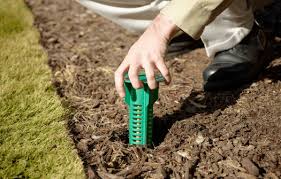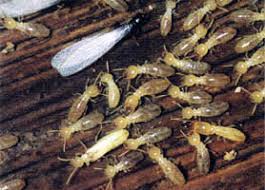The Ultimate Guide To Termite Control In Home
Drywood termites have wings before they find a suitable place to eat and reproduce. Once they find dry timber, their wings come off since they squeeze their way into the wood. A sign of termites is discarded wings. Look at the floor of your house, near baseboards, studs, and anything with timber.
Subterranean termites create sand tubes in the exterior of structures, objects, and materials that connect directly into the ground. Start looking for brown lines which follow a meandering path. These are easily identifiable on constructions of a contrasting colour like stone, concrete, and cement. These tubes are used by termites to control their body temperature.
If termites crawl out, use a termite spray stain treatment to kill themthen call a professional. The extent of an infestation is similar to an iceberg: the majority of it is unseen. .
Unlike bat poop, poop that is termite is not harmful or poisonous. But, it is a very clear indication of a issue. Look for tiny brownish-black pellets on wood surfaces, floorboards, and at the base of door and window frames. If you find any little wood colored, pellet-sized excrement, its time to your home to get a professional termite treatment. .
In case you have any living plants in your house poop is a great fertilizer. Scoop it up, and throw it in with your plants. If you dont have plants, throw it outside in the bud.
The Of Termite Control In Garden
A spray is an application of termiticide that's dispersed using a wide angle projectile application. It involves a pump system and can consist of a liquid or foam treatment. Professional termite spray treatments are used for spot applications, in conjunction with a treatment to expose the colony.

Pest infestations require instant and long-term approaches in order to be exterminated, for great. Preventative measures and spot treatments can be administered by our selections for 2018's four termite sprays. They supply immediate and short-term solutions to termite infestations.
Some Of Termite Control In Field Crops
If you have termites, the more helpful hints solution is to use Precision Foam Termite Spray for nooks and crannies, Bayer Termite Killer Spray around the outside of your home, and Terro Termite Spray for your homes interior. All of the time, have someone call a professional to find out about the best termite treatments for long-term protection. .
Thanks for reading about the four best sprays of 2018. In case you've used one of the products mentioned in the guide, don't hesitate to leave us a comment or question regarding your experience. And dont forget to sign up for our weekly newsletter.
Subterranean termites are by far, the most common termites in North Carolina. Several subterranean species are native to North Carolina, but their biology and activity are all essentially the same. The Formosan subterranean termite, an imported species, has recently been identified in a couple of locations in the state, but they're not widely distributed at this time.
To control termites, it is necessary to use pesticides. Pesticides used to control termites are called termiticides. Termiticides may be applied as liquids or baits. When employed as a liquid, then the termiticide is injected into the soil or to wood members of a structure. When a bait process is utilized, the bait is set in specially designed bait stations in the dirt around the exterior perimeter of a structure.

An Unbiased View of Termite Control In Field Crops
Debris has to be eliminated and wood /soil contacts should be broken. Termites thrive in moist environments and can survive above ground in moist wood. Correcting plumbing and roof leaks and other defects contributing to such conditions is imperative. Increasing ventilation in the crawlspace, adding rain gutters, grading to direct surface water away from the home might be beneficial in resolving moisture conditions.
Soil treatment Treatment of this soil establishes a barrier in the ground under and adjacent to a building. A continuous barrier must be established along the inside and out the foundation wall, under slabs and around utility entrances.A vertical barrier is established in the soil from trenching or trenching and rodding along all sides of foundation elements such as foundation walls, chimney bases, pilasters, and columns.